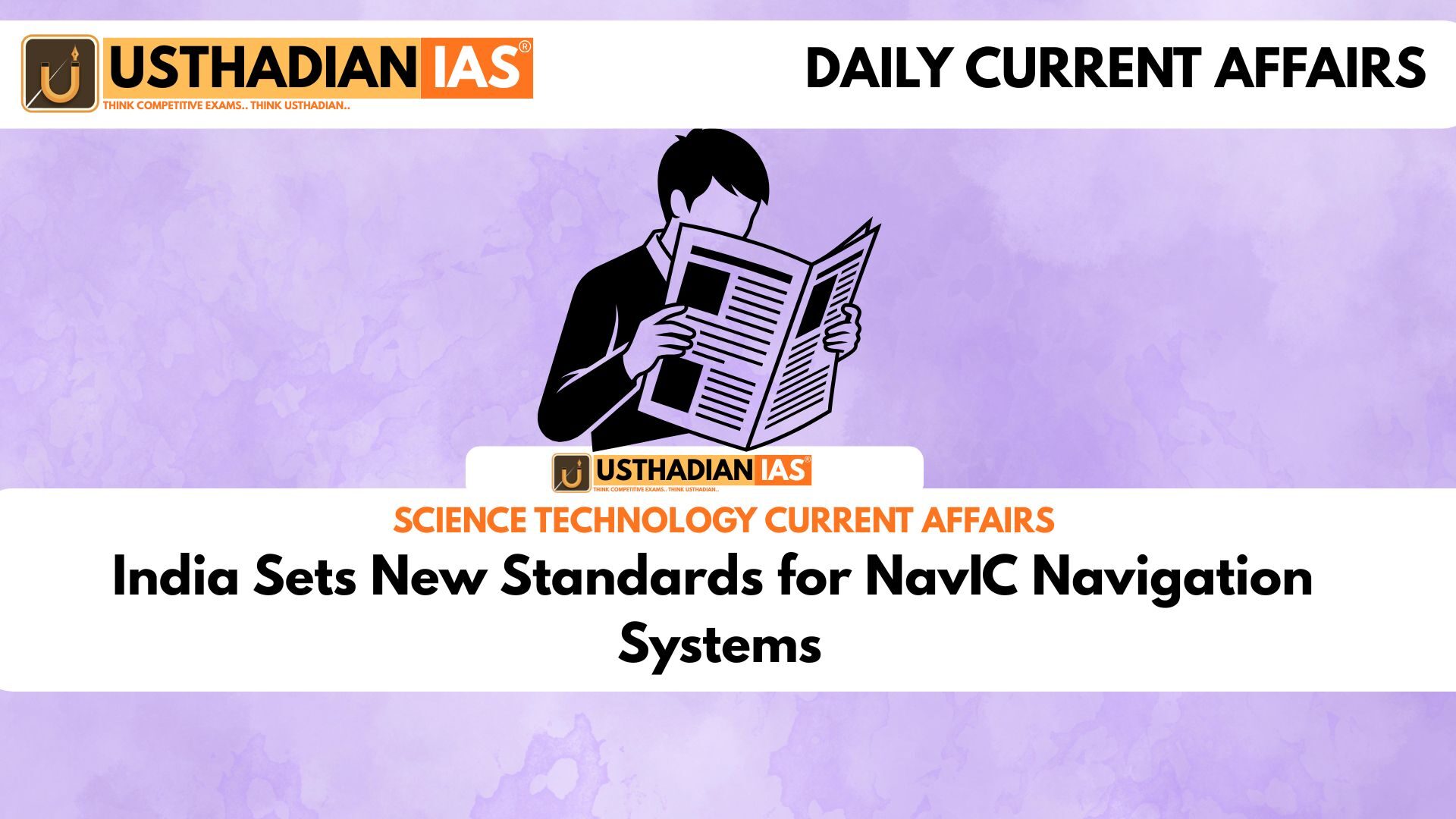Standardisation of India’s Navigation System
India Sets New Standards for NavIC Navigation Systems: The Government of India has introduced new standards for Navigation with Indian Constellation (NavIC) receivers, aiming to establish a unified and efficient satellite-based navigation framework. The move comes under the Bureau of Indian Standards (BIS) to enhance reliability, accuracy, and interoperability of NavIC-enabled devices across multiple sectors.
These standards outline parameters such as signal acquisition, tracking capability, positioning accuracy, and timing precision. They also ensure performance consistency across industries like transportation, agriculture, and disaster management, enabling wider application of indigenous navigation technology.
Static GK fact: BIS operates under the Ministry of Consumer Affairs, Food and Public Distribution, and formulates standards for industrial and technological systems in India.
Strengthening India’s Strategic Autonomy
The introduction of these standards represents a significant stride towards technological self-reliance. India’s push for an independent navigation ecosystem began after being denied access to high-precision GPS data during the 1999 Kargil conflict. The standardisation of NavIC ensures India no longer depends on foreign systems for critical navigation needs.
NavIC joins the global list of satellite navigation systems such as GPS (USA), Galileo (EU), GLONASS (Russia), and BeiDou (China). However, unlike GPS, which is under military control, NavIC is managed by civilian authorities under ISRO, reflecting India’s focus on regional needs and civilian applications.
Static GK Tip: ISRO, established in 1969, is headquartered in Bengaluru and operates under the Department of Space.
Evolution and Operational Capacity of NavIC
Initially called the Indian Regional Navigation Satellite System (IRNSS), NavIC was approved in 2006 and became fully operational in 2018 after launching seven satellites in geostationary and geosynchronous orbits. The system covers the entire Indian subcontinent and extends up to 1,500 km beyond its borders.
The BIS standards now certify receivers compatible with ISRO’s Standard Positioning Service (SPS) signals in L1, L5, and S frequency bands. These multi-band capabilities allow greater accuracy even in challenging terrains and urban environments.
Static GK fact: Each NavIC satellite weighs around 1,425 kg and has a mission life of 10 years.
Certification, Adoption, and Future Prospects
At present, BIS certification for NavIC receivers remains voluntary, but adoption is expected to grow rapidly. Industries are integrating NavIC support into smartphones, automotive systems, and IoT devices. With the government’s emphasis on Atmanirbhar Bharat, NavIC is emerging as a vital element in India’s digital and defense infrastructure.
Experts predict that in the coming years, NavIC will contribute significantly to India’s space economy, estimated to reach over $13 billion by 2025. The standardisation marks a key milestone in positioning India among global navigation technology leaders.
Static GK Tip: India became the fourth country in the world to have its own regional satellite navigation system.
Static Usthadian Current Affairs Table
India Sets New Standards for NavIC Navigation Systems:
| Topic | Detail |
| NavIC full form | Navigation with Indian Constellation |
| Developed by | Indian Space Research Organisation (ISRO) |
| Regulatory body for standards | Bureau of Indian Standards (BIS) |
| Year approved | 2006 |
| Fully operational since | 2018 |
| Satellite coverage | India and 1,500 km beyond borders |
| Frequency bands used | L1, L5, and S bands |
| Number of satellites | 7 operational satellites |
| Managing authority | Civilian under Department of Space |
| Strategic objective | Reduce dependence on GPS and enhance autonomy |








